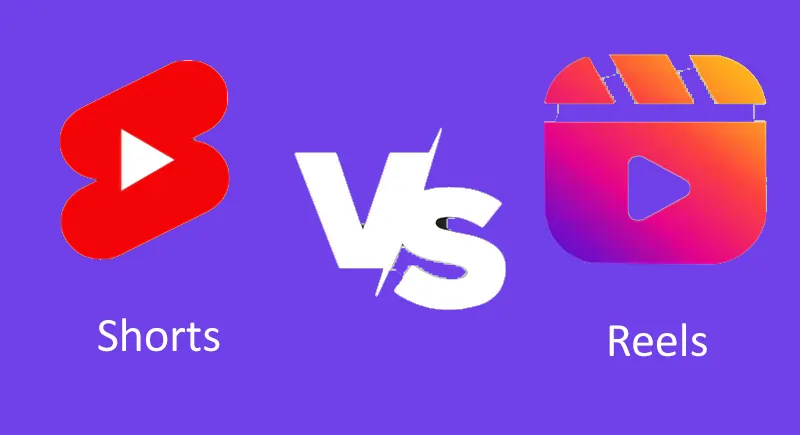In the fast-paced world of social media and digital marketing, short-form video content has emerged as a dominant force. Among the leading platforms in this space, YouTube Shorts and Instagram Reels have captured the attention of both creators and brands alike. As we step deeper into 2025, the question on every marketer’s mind is: Which platform truly wins—YouTube Shorts or Reels? Whether you’re an influencer, content strategist, or student enrolled in Digital Marketing Courses in Pune, understanding the strengths and limitations of each platform is essential for success.
The Rise of Short-Form Video Content
Short-form videos, typically under 60 seconds, have reshaped the digital landscape. They cater to modern attention spans, offer quick entertainment, and are easier to produce compared to long-form content. The format was popularized by TikTok, but YouTube and Instagram quickly followed suit to capitalize on this trend.
With millions of users consuming short-form videos daily, platforms are now optimizing algorithms, monetization options, and user interfaces to gain dominance in this space. As of 2025, both YouTube Shorts and Instagram Reels have matured significantly—each with its own pros, cons, and unique features.
YouTube Shorts: Strengths and Advantages
Launched in 2020, YouTube Shorts has grown from a simple TikTok alternative to a full-fledged content ecosystem within the YouTube platform.
1. Massive Audience Base
One of the biggest advantages YouTube Shorts has is access to YouTube’s enormous global audience. YouTube has over 2.7 billion logged-in monthly users as of early 2025. Shorts videos are seamlessly integrated into the main YouTube app, giving creators exposure to a highly engaged and diverse audience.
2. Search Engine Power
YouTube is owned by Google, the world’s largest search engine. This allows Shorts content to be indexed and appear in both YouTube and Google search results. This means creators have the potential for long-term discoverability, unlike Instagram Reels which mostly rely on the feed and Explore page for reach.
3. Monetization Opportunities
In 2023, YouTube launched ad revenue sharing for Shorts, enabling creators to earn money through views. Combined with other YouTube monetization options like channel memberships, Super Thanks, and sponsorships, YouTube Shorts offers a comprehensive income ecosystem that Reels is still catching up to.
4. Analytics and Creator Tools
YouTube provides robust analytics that allow creators to track performance metrics, understand audience behavior, and optimize content. In contrast, Instagram’s analytics, while improving, still lag behind in depth and customizability.
Instagram Reels: Strengths and Advantages
Instagram Reels, introduced in 2020, leverages Instagram’s photo-first origins and strong influencer culture to offer a dynamic platform for short videos.
1. Integration with Instagram Ecosystem
Reels benefit from Instagram’s ecosystem—Stories, Posts, IGTV (now retired but partially replaced by longer Reels), and direct messaging—making it easy for creators to maintain a cohesive brand across various content types. This creates a seamless user experience and encourages more interactions.
2. Visual Aesthetics and Creativity
Instagram Reels are known for their visually appealing editing tools, filters, and augmented reality effects. These features make Reels particularly attractive to lifestyle, fashion, and beauty creators who rely on visuals to tell compelling stories.
3. Shopping and Brand Integration
Instagram has deeply embedded shopping features into its app. Brands and creators can tag products directly in Reels, facilitating in-app purchases. This social commerce integration makes Instagram Reels a powerful tool for e-commerce businesses and influencers focused on brand partnerships.
4. Engagement-First Algorithm
Reels tend to go viral faster than YouTube Shorts, thanks to Instagram’s engagement-driven algorithm. Users often scroll through content passively, and Instagram capitalizes on this behavior by prioritizing entertaining and emotionally engaging videos that quickly capture attention.
Key Differences Between YouTube Shorts and Instagram Reels
To truly understand which platform might be better in 2025, let’s break down the key differences:
| Feature | YouTube Shorts | Instagram Reels |
| Audience Base | Wider, more global | Younger, lifestyle-oriented |
| Monetization | Revenue sharing + ads | Brand deals, limited monetization |
| Search Discoverability | High (via Google) | Moderate |
| Video Length | Up to 60 seconds (some longer beta tests) | Up to 90 seconds |
| Algorithm Focus | Watch time, engagement, SEO | Engagement, shares, trending |
| Analytics | Advanced (Studio Dashboard) | Basic (Insights tab) |
| Editing Tools | Basic but improving | Rich and dynamic |
| E-commerce Features | Limited | Strong (shopping tags, product links) |
Which Platform Wins in 2025?
1. For Content Creators
If you’re focused on growing a personal brand, especially through searchable and evergreen content, YouTube Shorts might be the better platform. The potential for long-term visibility and revenue is significantly higher. However, if your content relies heavily on trends, visuals, or lifestyle niches, Instagram Reels remains incredibly effective.
2. For Brands and Businesses
For brands in the e-commerce space, especially those targeting Gen Z and Millennials, Instagram Reels offer a better ecosystem due to shopping integrations and influencer partnerships. But for tech, education, finance, or other informative niches, YouTube Shorts allows for better SEO integration and brand authority.
3. For Digital Marketers
Digital marketers should ideally embrace both platforms. A cross-platform strategy ensures maximum exposure and audience reach. Repurposing content smartly across Shorts and Reels not only saves time but multiplies engagement opportunities.
Trends to Watch in 2025
The battle between Shorts and Reels continues to evolve. Here are some trends shaping the future:
1. AI-Powered Personalization
Both YouTube and Instagram are leveraging AI to recommend personalized content. Creators who understand how to optimize for these algorithms will dominate the short-form space.
2. Collaborative Tools
YouTube is working on collaborative tools to make Shorts more social and interactive, much like Instagram’s remix and collab features. Expect to see more multi-creator content in both ecosystems.
3. Monetization Expansion
Instagram is gradually rolling out more monetization tools like Reels bonuses, brand collaboration managers, and affiliate tagging. By the end of 2025, the gap between Shorts and Reels in terms of revenue potential may narrow.
4. Niche Communities
Both platforms are starting to promote niche communities. Whether it’s tech reviews, cooking tips, or dance tutorials, creators who specialize are seeing more loyalty and better engagement.
Final Verdict
Declaring a clear winner between YouTube Shorts and Instagram Reels in 2025 isn’t straightforward. Each platform offers distinct advantages depending on your goals.
- Choose YouTube Shorts if: You want search visibility, long-term monetization, and broad audience reach.
- Choose Instagram Reels if: You prioritize trendy, visual content, shopping integration, and brand collaborations.
The most effective strategy in 2025 is to diversify your content. Using both platforms strategically can supercharge your digital presence. By tailoring your content to fit each platform’s strengths, you’ll reach wider audiences, maximize engagement, and increase ROI.
Ready to Master These Platforms?
To truly excel in short-form content marketing, having a deep understanding of platform dynamics, algorithm behavior, and content strategy is essential. Whether you’re a budding influencer, small business owner, or aspiring marketer, enrolling in a digital marketing training institute in Pune can provide you with hands-on experience, tools, and techniques to succeed in the competitive landscape of 2025.
Let me know if you’d like this formatted for WordPress, or want social media captions, SEO metadata, or image suggestions to go along with the post!









